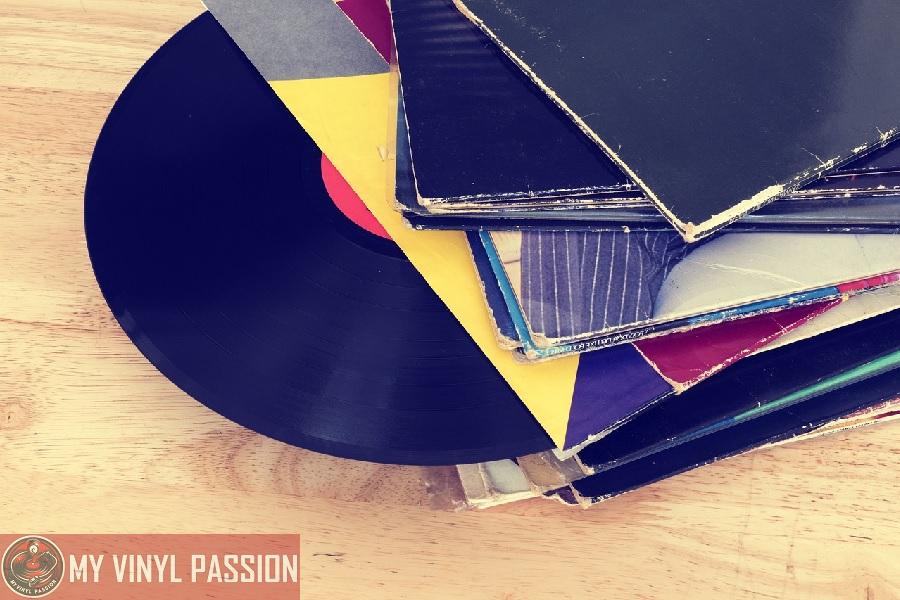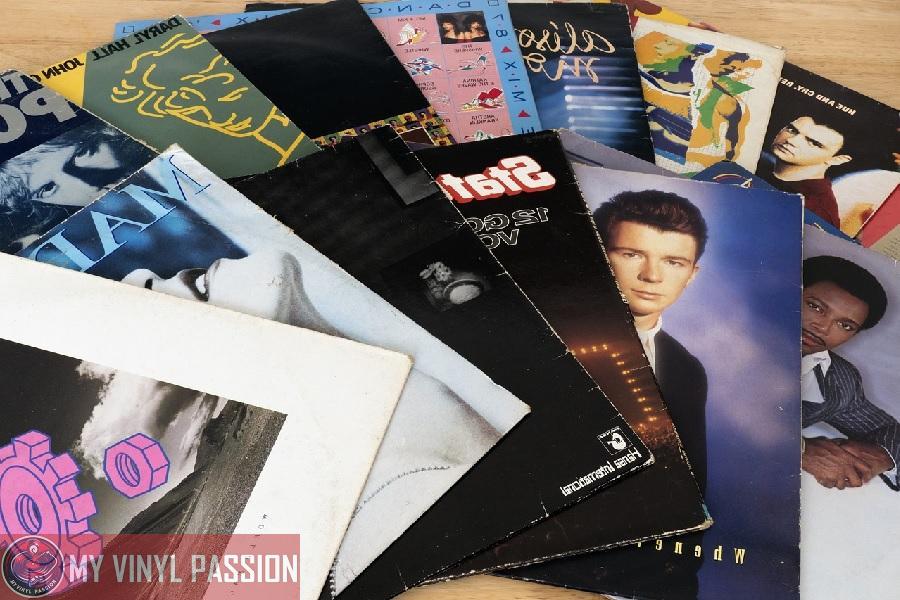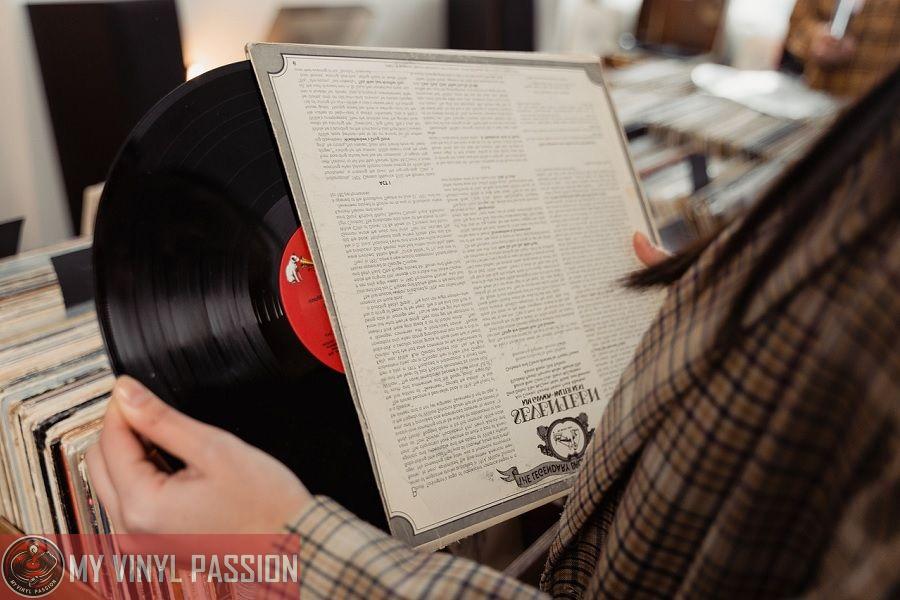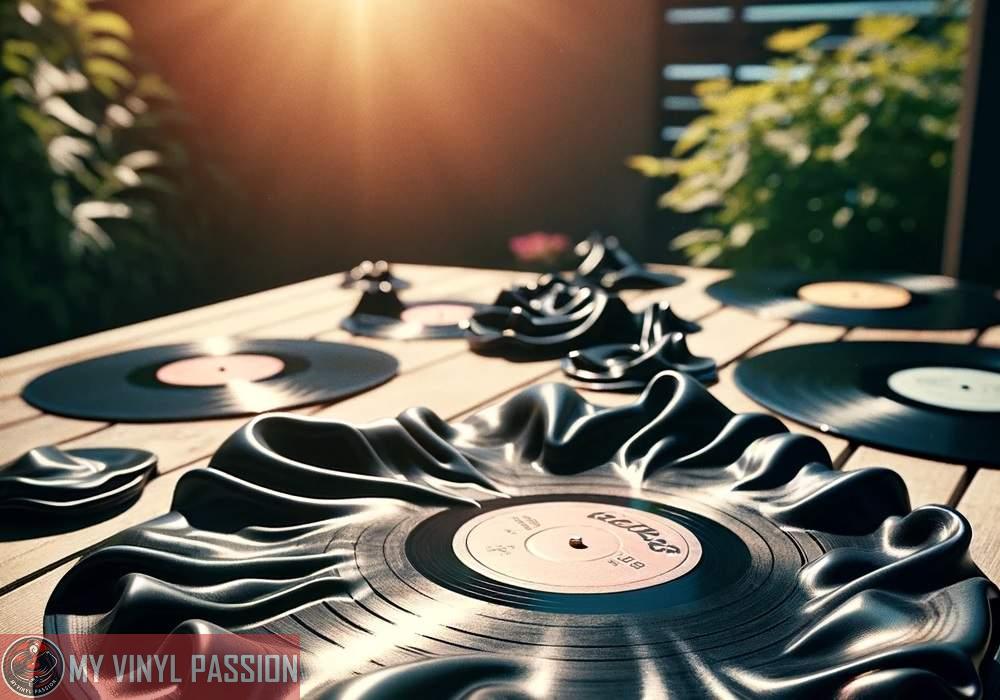When you place a vinyl record on your turntable, the expectation is a smooth voyage through the grooves of your favorite tunes.
However, a jarring skip can disrupt this experience. A vinyl record skips when the stylus, also known as the needle, jumps out of the groove.
This can happen for a variety of reasons, ranging from dirt or dust on the record, scratches or warping of the vinyl, to issues with the turntable itself, such as an imbalanced tonearm or a worn-out needle.
In Summary
Accumulated dirt, dust, or debris in the record’s grooves can disrupt the needle’s path, causing the record to skip or jump.
Scratches or physical damage to the vinyl surface can lead to skipping, as the needle is unable to track the grooves accurately.
Incorrect setup of the turntable, such as an unbalanced tonearm, improper tracking force, or a worn stylus, can cause the record to skip.
Vinyl records that are warped due to heat exposure or improper storage can lead to skipping, as the needle struggles to follow the distorted grooves.
Understanding the cause of a record skipping is important to both preserve the condition of your vinyl and ensure consistently high-quality audio playback.
Debris on the record surface can easily prompt a skip, and meticulous cleaning is often the simplest remedy. On the other hand, scratches might require a more nuanced approach to possibly mend the damaged grooves.
When it comes to your turntable, correct setup and regular maintenance are key to preventing skips.
This includes setting the proper counterweight and anti-skate adjustments, ensuring the stylus is in good condition, and keeping the turntable level.
If your vinyl record starts skipping, inspecting both the record and your playback equipment is important.
Handling your vinyl records with care, storing them properly, and keeping your turntable in optimal working condition can greatly reduce the instances of skipping, allowing you to fully enjoy the richness and warmth that vinyl records are revered for.
By addressing the common causes of record skipping, you maximize the longevity of your collection and the enjoyment of your listening experience.
Anatomy of Vinyl Records and Players
To understand why a vinyl record might skip, it’s essential to grasp the intricate relationship between the record’s grooves and the stylus, and the key components of the record player itself.
Understanding the Groove and Stylus Interaction
The surface of a vinyl record features continuous spiral grooves that start from the edge and end near the center. Each groove is a microscopic representation of the audio signal, with variations in width and depth encoding the sounds.
Your stylus, or needle, sits in these grooves as the record spins on the platter. Precise stylus-groove contact is critical; any disruption can cause the stylus to jump and result in a skip.
Components of the Record Player
- Stylus (Needle): The stylus, often diamond-tipped, tracks the grooves of the vinyl to read the audio data.
- Cartridge: It houses the stylus and transduces the mechanical movements into electrical signals.
- Tonearm: This component holds the cartridge and stylus over the record, ensuring the needle tracks the grooves accurately.
- Platter: The platform on which the vinyl record sits and rotates.
Each part must function correctly to prevent the record from skipping; even small issues with these components could disturb the delicate interaction between stylus and groove.
Common Causes of Skipping
When you play vinyl records, any disruptions in the delicate balance between the stylus and the record’s surface can result in skipping. Understanding the common causes helps mitigate these issues for a better listening experience.
Dust, Dirt, and Debris Accumulation
Dust and dirt are your record’s adversaries. Even small particles can impede the stylus from tracking the grooves accurately, causing skips. Regular use of a record cleaner can prevent this. Make it a habit to clean your records with a soft, anti-static brush before and after playing them.
External Vibrations and Movement
Vibrations from nearby speakers, foot traffic, or even the rumble of a passing truck can disturb the stability of your turntable. To minimize this, ensure your turntable is placed on a stable, level surface. Additionally, adjustable anti-skate control helps the needle stay centered in the record groove, combating these external forces.
Misaligned or Damaged Equipment
Skips often stem from misaligned or worn needles. Check for proper needle alignment regularly and replace the needle if you find wear or damage. A warped record or an uneven turntable also contributes to skipping. Investing in a high-quality platter and using a bubble level can keep your equipment balanced and functional.
Maintaining Your Vinyl Records
Maintaining your vinyl records is essential to ensuring their longevity and sound quality. Adhering to effective cleaning techniques and proper storage and handling practices will protect your records from common issues like skipping.
Effective Cleaning Techniques
Your vinyl records require regular cleaning to remove dust and debris that can cause skips and pops. Use a record cleaning brush or a microfiber cloth to gently sweep the surface of the record in a circular motion following the grooves.
For deeper cleaning, consider specially formulated record cleaning solutions. Apply the solution according to the manufacturer’s instructions and remove it with a clean cloth, always working in the direction of the record’s grooves.
| Step | Tool | Action |
|---|---|---|
| 1 | Brush or Cloth | Gently remove surface dust |
| 2 | Cleaning Solution | Apply cleaning solution for a deep clean |
| 3 | Clean Cloth | Wipe away the solution in a circular motion |
Proper Storage and Handling
When handling your records, always hold them by the edges or the labeled surface to avoid transferring oils from your fingers to the grooves. Ensure your records are stored vertically in a cool, dry place to prevent warping.
Using anti-static record sleeves can offer additional protection from dust and static build-up which not only affects playback but can also attract more dirt to the surface of the vinyl.
| Do | Don’t |
|---|---|
| Hold by edges or label | Touch the grooves with your fingers |
| Store vertically | Stack records horizontally |
| Keep in anti-static sleeves | Leave records outside of sleeves |
| Place in a cool, dry environment | Expose to heat or moisture |
By integrating these care and maintenance practices into your routine, you’ll preserve the pristine condition and immaculate sound of your vinyl records.
Troubleshooting Common Issues
When your vinyl record starts skipping or sounds distorted, a few common issues often come to light. Addressing these effectively can restore the pure audio experience you cherish.
Adjusting Turntable Settings
Tonearm Balance: Your turntable’s tonearm needs proper balance to function correctly. If it’s too light, it might skip; too heavy, and it could damage your record.
You’ll want to adjust the tonearm balance and vertical tracking force (VTF) according to your turntable’s manual to ensure the needle tracks the groove precisely without skating across.
- Step 1: Balance the tonearm so it’s level with the record surface.
- Step 2: Dial in the recommended VTF, typically by adjusting a counterweight at the rear of the tonearm.
Dealing with Warped Vinyl
Warp Repair: Warped records can lead to skips and distortions. If your vinyl is warped, playing it can be challenging.
- Light Warp: Place the record under a flat, heavy object for an extended period to potentially flatten minor warps.
- Severe Warp: Professional resurfacing may be necessary, although it’s not a guaranteed fix.
Repairing Surface Damage
Scratch Mitigation: A scratched record can suffer from skipping. While deep scratches might be beyond repair, lighter surface damage can sometimes be mitigated.
- Cleaning: Use a carbon fiber brush to remove dust and debris from the record’s surface.
- Scratch Repair: Gently clean the scratched area with a soft cloth and isopropyl alcohol, being careful not to apply excessive pressure.
Remember, the best fix for damage is often precautionary care and proper handling to prevent scratches and warps in the first place.
Upgrading Your Vinyl Experience
Elevating your vinyl listening sessions entails meticulous attention to your equipment and accessories. Achieving optimum audio quality and investing in superior additions can transform your records from mere background music to a rich, immersive experience.
Enhancing Audio Quality
The core of a satisfying vinyl experience hinges on the audio quality.
Turntables serve as the foundation, and choosing one with precision engineering is crucial. An upgrade may involve selecting a turntable with a superior cartridge and a more accurate tonearm, which directly affect the sound extracted from the grooves of your records.
Upgrades can also target the speakers, where investing in those with high-fidelity sound reproduction capability is essential. Your record weight, which is an often overlooked element, has a significant role in stabilizing the record and reducing vibrations that can cause skips.
Investment in High-Quality Accessories
Your vinyl journey is complemented by the quality of enhancements you incorporate.
This includes replacement components such as styluses, which wear over time, and cleaning kits to keep your records dust-free and eliminate static. A careful record collector knows that the longevity and performance of their collection depend on these maintenance practices.
Another strategic upgrade is dampening accessories that minimize unnecessary resonance, enhancing overall sonic clarity. Prioritizing these accessories reflects not only an enjoyment but also a commitment to the vinyl experience.
FAQs
Why does dust or dirt on a vinyl record cause it to skip?
Dust or dirt in the grooves of a vinyl record can obstruct the path of the needle (stylus), leading to disruptions in playback, including skipping, as the needle jumps over the debris.
How do scratches on a vinyl record result in skipping?
Scratches on the surface of a vinyl record can alter or damage the grooves, causing the needle to jump or skip over the affected area, disrupting the continuous playback of music.
Can a poorly calibrated turntable cause record skipping?
Yes! If the turntable’s tonearm is unbalanced, the tracking force is incorrect, or the stylus is worn out, it can lead to improper needle tracking, causing the record to skip.
What should I do if my vinyl record is skipping due to warping?
If a record is warped, it’s challenging to fix at home. Store it properly to prevent further damage, and consider professional flattening services. For minor warps, carefully playing the record a few times might help, but there’s a risk of damaging the needle.
Is it possible to fix a skipping vinyl record?
Cleaning the record can remove dust and dirt that may cause skipping. For scratches, there’s limited recourse, but a professional might be able to repair significant damage. Warped records are harder to fix, and prevention is the best strategy.





